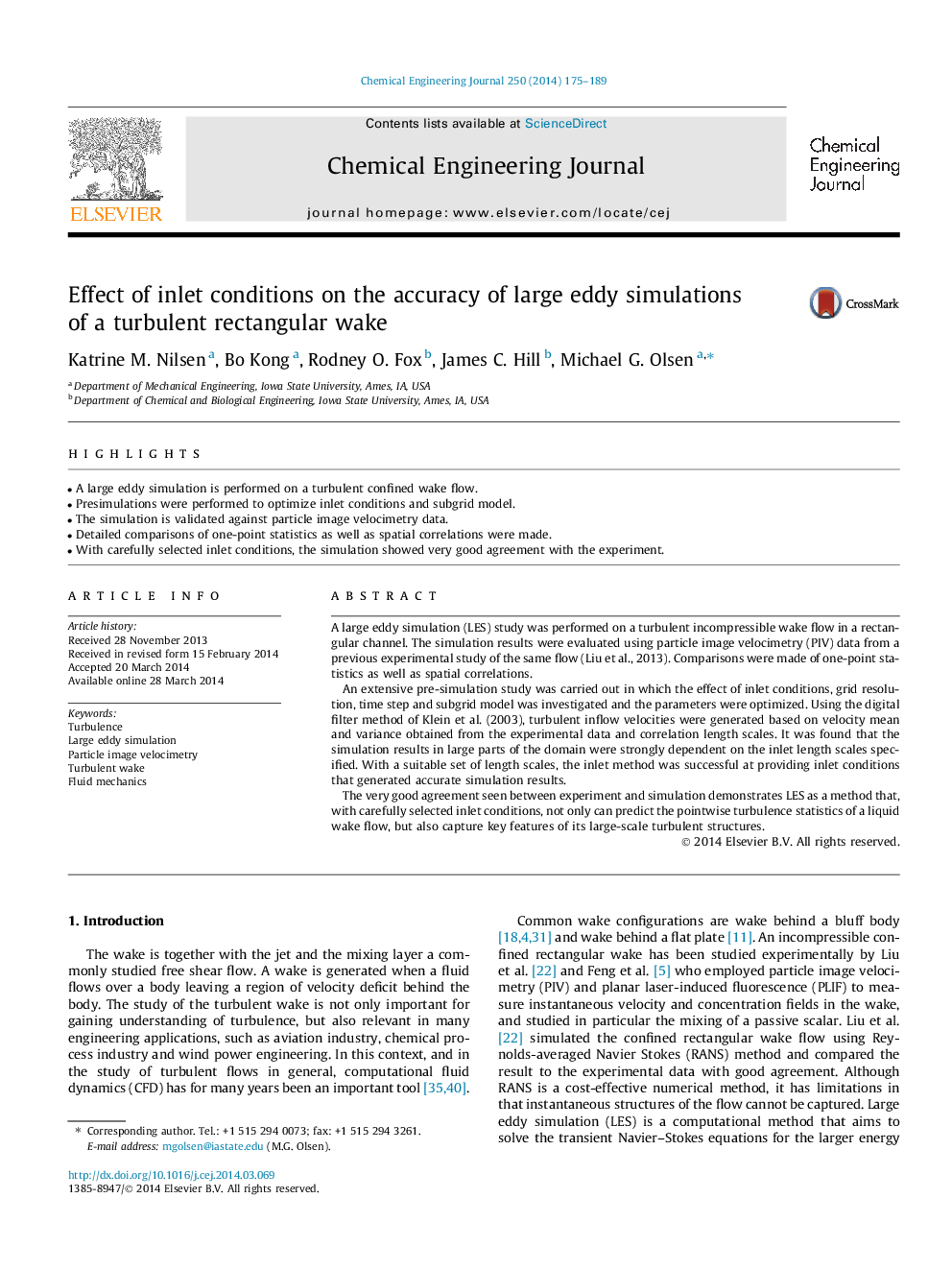| کد مقاله | کد نشریه | سال انتشار | مقاله انگلیسی | نسخه تمام متن |
|---|---|---|---|---|
| 147379 | 456390 | 2014 | 15 صفحه PDF | دانلود رایگان |
• A large eddy simulation is performed on a turbulent confined wake flow.
• Presimulations were performed to optimize inlet conditions and subgrid model.
• The simulation is validated against particle image velocimetry data.
• Detailed comparisons of one-point statistics as well as spatial correlations were made.
• With carefully selected inlet conditions, the simulation showed very good agreement with the experiment.
A large eddy simulation (LES) study was performed on a turbulent incompressible wake flow in a rectangular channel. The simulation results were evaluated using particle image velocimetry (PIV) data from a previous experimental study of the same flow (Liu et al., 2013). Comparisons were made of one-point statistics as well as spatial correlations.An extensive pre-simulation study was carried out in which the effect of inlet conditions, grid resolution, time step and subgrid model was investigated and the parameters were optimized. Using the digital filter method of Klein et al. (2003), turbulent inflow velocities were generated based on velocity mean and variance obtained from the experimental data and correlation length scales. It was found that the simulation results in large parts of the domain were strongly dependent on the inlet length scales specified. With a suitable set of length scales, the inlet method was successful at providing inlet conditions that generated accurate simulation results.The very good agreement seen between experiment and simulation demonstrates LES as a method that, with carefully selected inlet conditions, not only can predict the pointwise turbulence statistics of a liquid wake flow, but also capture key features of its large-scale turbulent structures.
Journal: Chemical Engineering Journal - Volume 250, 15 August 2014, Pages 175–189
